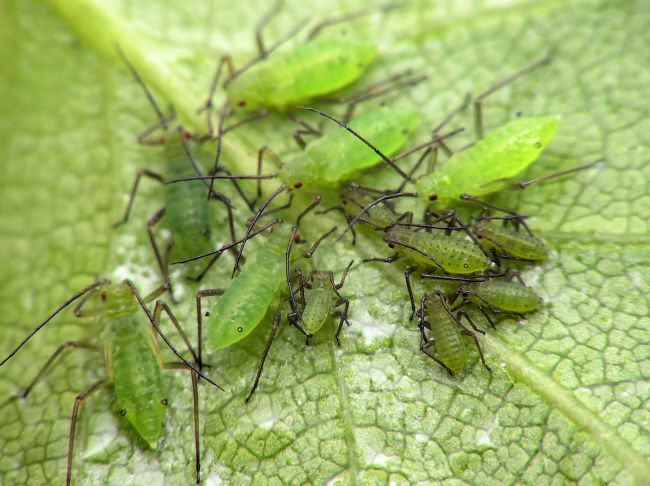Tomato pests: how to spot and control them

Tomato plants are beloved by gardeners for their delicious, versatile fruit and relatively low-maintenance nature. Yet, as robust as tomatoes can be, they are not immune to threats. In particular, the presence of tomato pests can be highly problematic, and if left unchecked, these pests can compromise both the yield and the health of your plants. Luckily, many biological plant protection strategies exist that help keep destructive insects at bay without resorting to harsh chemicals.
This article explains several common insects and related threats that might harm tomato plants. It also explores detection strategies and safe, eco-friendly control methods. By the end, you will have a solid understanding of how to protect your tomatoes from unwanted visitors, maximising your garden’s productivity.
Why opt for biological plant protection
Biological plant protection refers to using natural methods, such as beneficial insects, microbial agents, and certain organic materials, to protect plants from pests and diseases. It aims to preserve, rather than upset, the delicate balance of the ecosystem in your garden. Below are a few reasons why gardeners worldwide are turning to these eco-friendly approaches:
Safety for people and pets: Natural pest-control solutions reduce the risk of toxic exposure to humans and animals.
Environmental sustainability: Avoiding synthetic chemicals safeguards pollinators (like bees), beneficial predators (like ladybirds), and soil organisms.
Resistance prevention: Over time, pests can become resistant to conventional pesticides. Natural methods help lower the risk of creating pesticide-resistant pest populations.
Adopting a biological strategy doesn’t mean you have to sacrifice results. With the right knowledge, you can manage pests effectively and help the wider environment flourish.
Recognising the early signs of tomato pests
Early detection is crucial when dealing with tomato pests. The sooner you identify a problem, the easier it is to address. Common early warning signs include:
Curled or yellowing leaves
Chewed edges or holes on foliage
Sticky or silvery residue on leaves (indicative of certain insects)
Wilting or stunted growth
Although some symptoms may also be associated with tomato diseases, pests often leave visible clues like webbing, larvae, eggs, or tiny insects. Regularly inspect both sides of leaves and around the stems to spot any intruders before they can wreak havoc.
Common tomato pests and how to control them
Below is an overview of prevalent tomato pests, along with recommended control methods. Whenever possible, it is best to start with biological or low-impact methods before resorting to chemical treatments.
Aphids
Aphids are small, pear-shaped insects typically found in clusters on plant stems or undersides of leaves. They suck sap from the plant and excrete a sticky substance called honeydew, which can lead to mould growth.
Identification: Look for curled leaves, stunted growth, and small green, black, or brown insects in groups.
Biological control: Encourage natural predators such as ladybirds, lacewings, and parasitic wasps, which feed on aphids. Try planting flowers like marigolds or nasturtiums nearby to attract these beneficial insects. You can also rinse aphids off with a strong jet of water.
Organic solutions: Use insecticidal soaps or neem oil sprays, which can be effective yet kinder to the environment than synthetic pesticides.
Whiteflies
Whiteflies, named for their white, powdery wings, often congregate in large numbers on the undersides of tomato leaves. They suck sap from your plants and can spread viral infections through their feeding.
Identification: Gently tap or shake the stems; whiteflies will fly off if disturbed. You may also see a sticky residue and yellowing leaves.
Biological control: Deploy sticky traps to reduce adult populations and introduce predatory insects like ladybirds, big-eyed bugs (Geocoris), or parasitic wasps (Encarsia formosa).
Organic solutions: Insecticidal soaps or homemade sprays with mild dish soap can help break down the outer coating of whiteflies, slowing their spread.
Spider mites
Spider mites are tiny arachnids that thrive in hot, dry conditions. They often produce a fine, webby material on the undersides of leaves. Because they are so small, mite activity is easy to overlook until plants begin to yellow or show a speckled pattern on the foliage.
Identification: Check for fine webbing at leaf joints and examine the undersides of leaves for small, moving dots.
Biological control: Introduce predator mites such as Phytoseiulus persimilis, which specifically feed on spider mites. Increase humidity around plants to discourage their reproduction, and keep the area well-watered (without overdoing it).
Organic solutions: Lightly misting plants can hinder spider mite activity. If infestation persists, employ miticidal soaps or neem oil.
Tomato hornworms
Large, green caterpillars known as tomato hornworms can devour entire leaves and even chew unripe fruit. These voracious feeders can do considerable damage if left unchecked.
Identification: Hornworms can grow up to 10 cm long and have a distinctive horn-like protrusion on their rear. Look for droppings on lower leaves or the ground, which are small and dark.
Biological control: Handpick hornworms whenever you spot them and drop them into a bucket of soapy water. You can also encourage natural parasites such as braconid wasps, which lay eggs on hornworms. Leave caterpillars with small white cocoons attached to their backs; these are parasitic wasp cocoons, which will help reduce the hornworm population.
Organic solutions: A combination of regular inspection and targeted removal is usually enough. If infestations are heavy, consider a natural bacterial spray containing Bacillus thuringiensis (Bt).
Thrips
Thrips are slender, tiny insects that feed on stomata (small leaf openings), leaving stippled or silvered patches. They also excrete dark faecal spots on foliage. Thrips can weaken plants by draining sap and spreading diseases.
Identification: Look for small insects crawling on leaves or blossoms. Damaged leaves may appear silvery, pitted, or discoloured.
Biological control: Beneficial insects like Orius (minute pirate bugs) prey on thrips. Introducing them to your garden can significantly lessen thrip populations.
Organic solutions: Use blue or yellow sticky traps to catch thrips, and apply insecticidal soaps as needed. Maintaining good airflow and regularly removing debris can also deter these pests.
Preventative measures for a healthier tomato garden
While the pests listed above are some of the most common, an effective prevention strategy is even more valuable than reactive measures. Below are a few steps you can take to make your garden inhospitable to unwanted insects:
Choose pest-resistant varieties: Some tomato varieties are bred specifically for resistance to common threats. Seek out these cultivars if you’ve experienced recurring infestations.
Proper spacing and pruning: Overcrowded plants create a moist environment that encourages pest and disease development. Prune lower leaves to improve air circulation.
Crop rotation: Avoid planting tomatoes in the same spot each year, as pests and pathogens can persist in the soil. Rotate tomatoes with unrelated crops to reduce soil-borne populations.
Keep the garden tidy: Remove fallen leaves and fruit promptly. Decomposing organic matter can attract insects and disease-causing organisms.
Water correctly: Excessive thirst or overwatering can stress plants, making them more vulnerable to infestation. Water consistently at the base, preferably in the morning, to give leaves a chance to dry before evening.
Nurturing beneficial organisms for long-term balance
Apart from introducing specific predatory insects, you can encourage a healthier ecosystem by creating an inviting environment for a wide range of beneficial creatures. Pollinators, beetles, and soil-dwelling micro-organisms all contribute to your garden’s natural resilience. Here are some tips:
Plant a variety of flowers: Not only do they attract pollinators, but they also offer alternative food sources for beneficial insects when pest populations are low.
Provide habitats: Rock piles, logs, and patches of undisturbed ground create shelter for ground beetles, spiders, and other garden allies.
Avoid broad-spectrum pesticides: These chemicals don’t discriminate between pests and beneficial insects, potentially leaving your plants vulnerable to future infestations.
Biological pest control: natural ways to protect your tomato plants
Biological pest control is a sustainable method that uses living organisms, like beneficial insects, bacteria, or nematodes, to combat garden pests. Instead of turning to synthetic chemicals, you can let nature restore balance by targeting pests with their natural enemies. For more guidance on which solutions are suitable for your region, resources like the CABI BioProtection Portal offer helpful tools to identify and apply biological pest control methods effectively.
Here are some proven biological pest control techniques for tomato plants:
Introduce beneficial insects: Ladybirds, green lacewings, and parasitic wasps are excellent at reducing populations of aphids, whiteflies, and caterpillars. These insects can be purchased or encouraged by planting companion flowers like dill, marigold, or yarrow.
Use microbial treatments: Bacillus thuringiensis (Bt) is a bacterium that targets caterpillars such as the tomato hornworm without harming other insects. It’s safe for humans, pets, and pollinators.
Apply nematodes to the soil: These microscopic roundworms are effective against soil-dwelling pest larvae and root-eating insects. They’re easy to apply and highly targeted.
Enhance garden biodiversity: A garden rich in diverse plants supports a healthy population of predators and pollinators. This naturally reduces outbreaks by keeping pest populations in check.
Biological pest control not only minimizes harm to the environment but also helps build a resilient ecosystem in your garden. When used consistently, it can reduce dependence on chemical sprays and support vigorous tomato growth.


